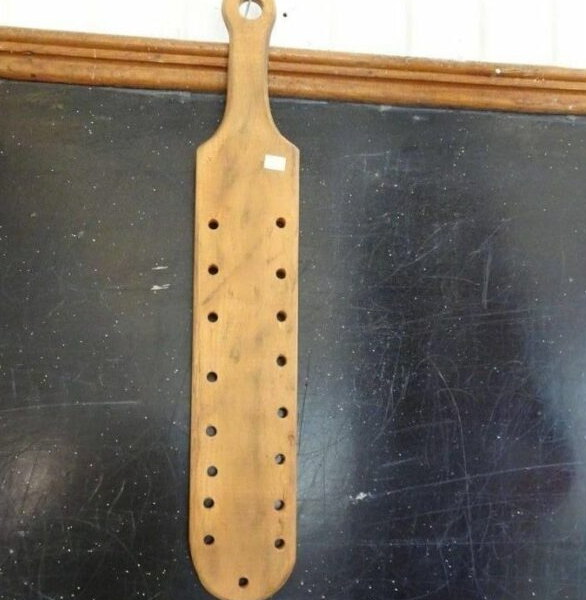In today’s world, disciplinary practices for children have significantly evolved. The vintage wooden paddle, once a central figure in schools and homes across America, symbolizes a bygone era of discipline. While it evokes nostalgia for some, for others, it’s a reminder of stricter, more rigid times. Let’s take a journey back in time to explore the origins, impact, and legacy of this iconic tool of discipline.
Understanding the Vintage Wooden Paddle’s Design
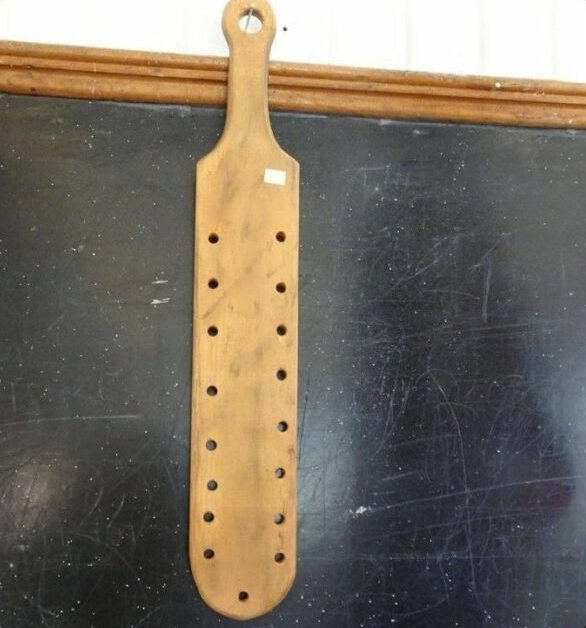
The vintage wooden paddle was not just a simple object; its design was purposeful. Made from solid hardwood, the paddle featured a long handle and a broad, flat surface meant for delivering discipline swiftly. The most distinctive feature was the array of holes drilled into the paddle, which wasn’t just for show. These holes minimized air resistance, increasing the paddle’s speed and impact—a stark reminder of its intended use.
Hanging prominently in classrooms, the paddle’s mere presence often prompted compliance among students. It was not just an object of discipline but a powerful deterrent, reminding children of the consequences of misbehavior. Similarly, at home, the paddle was displayed as a constant reminder that strict discipline was only an arm’s reach away.
The Role of the Wooden Paddle in Schools
In the mid-20th century, the wooden paddle became synonymous with school discipline, especially in the American South. During this era, corporal punishment was widely accepted as a tool to maintain order. Teachers were given authority to administer paddling for a variety of misbehaviors, and it was often carried out publicly to set an example for other students. This method of discipline was believed to promote respect for authority and deter future misconduct.
However, not everyone saw the paddle’s use positively. While some educators viewed it as a practical deterrent, critics argued that it instilled fear rather than respect. Child development experts warned of potential psychological damage, emphasizing the negative effects such as fear, anxiety, and decreased self-esteem.
Shifting Attitudes Towards Discipline
As the 20th century progressed, societal views on discipline shifted dramatically. Research began to show that physical punishment could lead to long-term negative outcomes, such as increased aggression, depression, and reduced self-worth in children. This growing body of evidence paved the way for legislative changes, leading many states to ban corporal punishment in schools.
The paddle, once viewed as a necessary tool, was now seen as a symbol of outdated disciplinary methods. Educators began to adopt alternative approaches, focusing on positive reinforcement, counseling, and more empathetic ways to address behavior issues. The shift represented a broader cultural move toward understanding and compassion in child-rearing.
Personal Memories of the Wooden Paddle
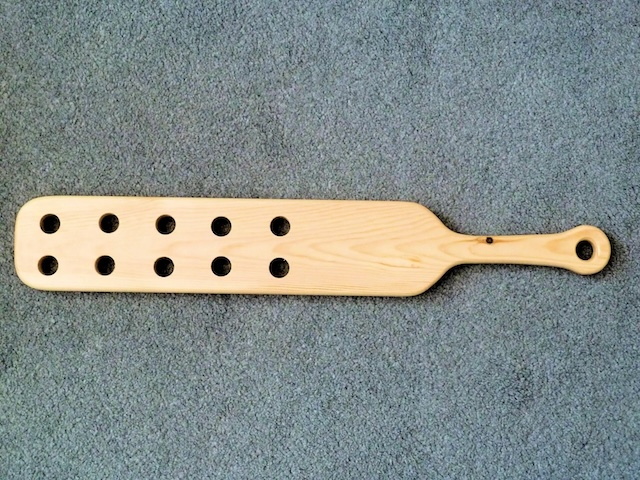
For those who grew up in the 1950s through the 1970s, the wooden paddle remains a vivid part of school memories. Being sent to the principal’s office often carried the implicit threat of a paddling, adding to the fear and embarrassment of misbehavior. For many children, the experience was painful and public—a strange rite of passage for some and a dreaded moment for others.
Interestingly, the paddle also became part of childhood folklore. Kids swapped exaggerated tales about its impact, creating an aura of both fear and bravado. Some even attempted to soften the blow by stuffing paper towels or wearing extra clothing—a tactic that rarely succeeded.
The Decline and End of the Wooden Paddle Era
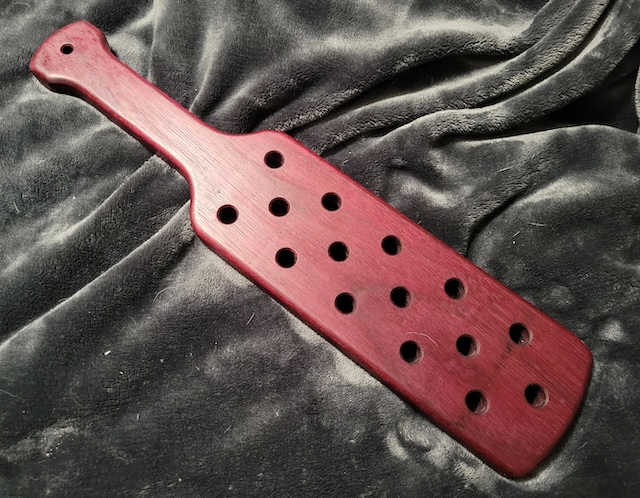
By the 1980s and 1990s, the wooden paddle’s presence in schools had significantly declined. Legislative reforms, increased awareness of children’s rights, and a focus on mental well-being drove the change. Educators started to emphasize empathy and understanding, moving away from punitive measures to more positive, constructive disciplinary methods.
Today, the vintage wooden paddle is more likely found in antique shops or historical exhibits. It serves as a relic of a different era, symbolizing how attitudes toward discipline have evolved over time.
The Vintage Wooden Paddle: Symbol of Nostalgia or Outdated Discipline?
Despite its controversial history, the vintage wooden paddle remains a significant part of many people’s memories. For some, it represents a time when discipline was swift and direct, serving as a reminder of stricter rules and immediate consequences. For others, it symbolizes a harsh and outdated approach, replaced by more humane and compassionate ways of addressing children’s behavior.
Lessons Learned from the Vintage Wooden Paddle
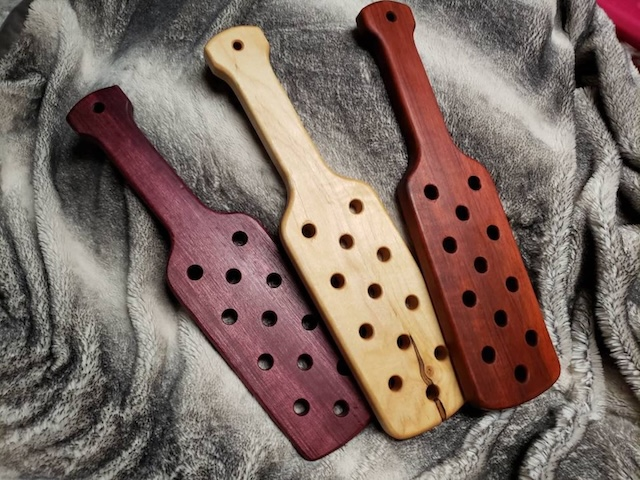
While the wooden paddle is now largely a thing of the past, its story offers valuable lessons about societal change. It’s a reminder of how our understanding of child development has improved and how we’ve moved toward nurturing children’s growth rather than instilling fear. The shift away from physical punishment highlights a broader cultural trend toward empathy, respect, and psychological well-being.
As we continue to refine our methods of guiding the next generation, the wooden paddle serves as a marker of progress—a reminder that discipline should foster trust and respect rather than fear.
Conclusion: Reflecting on the Legacy of the Wooden Paddle
The vintage wooden paddle, while no longer part of today’s disciplinary practices, carries a complex legacy. It represents a time when physical punishment was central to child-rearing and education. Whether viewed as a nostalgic relic or a symbol of outdated methods, it undeniably played a significant role in shaping past generations. Today, as we emphasize compassion, empathy, and understanding in education, the paddle’s story serves as a testament to how far we’ve come—and how we strive to create better systems for the future.
The vintage wooden paddle may have faded from classrooms, but its lessons on discipline, change, and human development continue to resonate. It’s a reminder of where we’ve been and a guidepost for where we aim to go in fostering more compassionate environments for children.
